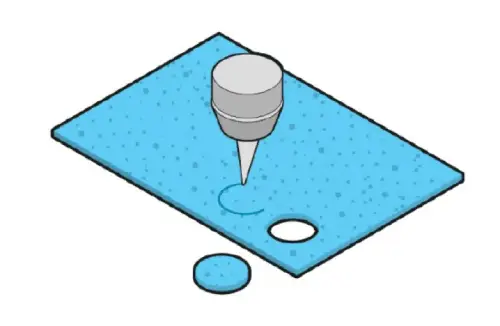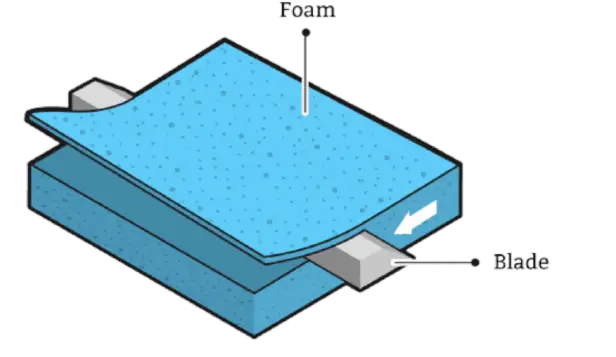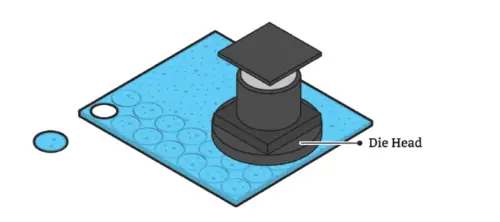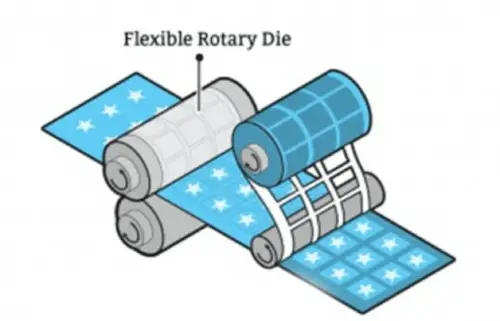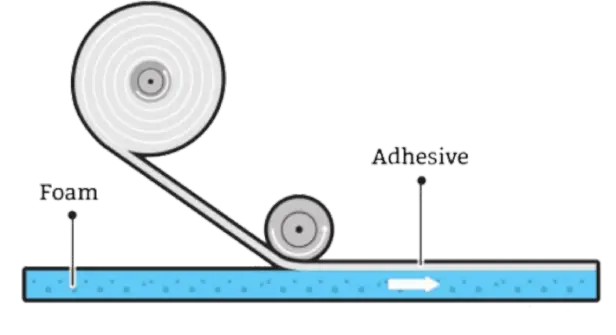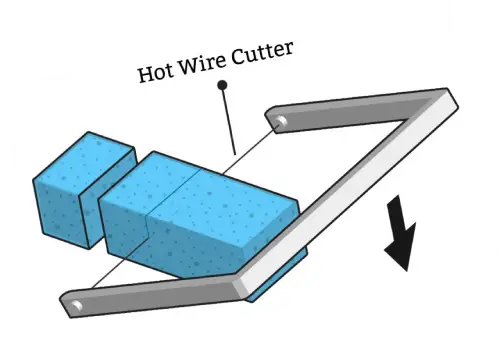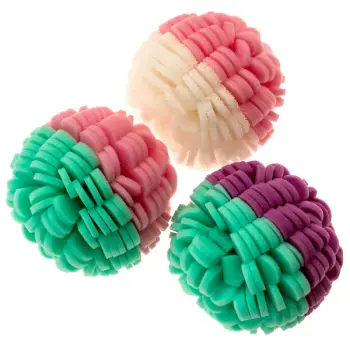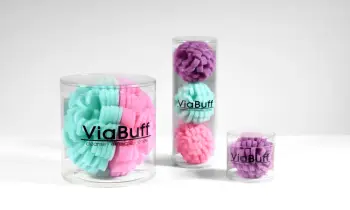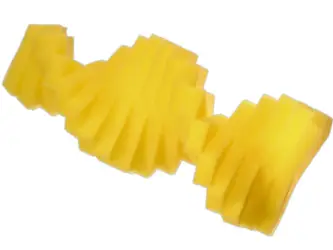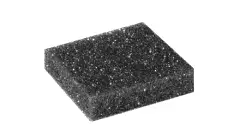
OPEN CELL POLYURETHANE
- Lightweight material
- Can be cut, molded or shaped to fit into any application
Common Applications: Acoustics & Vibration Control, Bedding & Furniture Cushioning, Medical Equipment, Packaging, Filters, Gaskets, Cosmetic Applicators, Sporting goods, Outdoor & Marine Furniture, Electronics, & Cleaning (sponges, mops, etc)
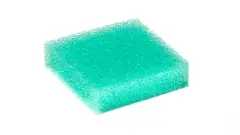
RETICULATED POLYURETHANE
- Sound Absorbtion
- Liquid Absorbtion
- Chemical Resistant
- Pliable and Compressive
- Mold and Mildew Resistant
- Lightweight Resilient
- Tear Resistant
Common Applications: Vehicle and Small Engine Air Filters, Water Purification, Air Conditioning Filters, Speaker Grills, Microphone Windscreens, Cosmetic Applicators, Face Mask Filters, Humidifier Filters & Pads, & Acoustic Tiles

POLYETHYLENE
- Low Water Absorption and Vapor Transmission
- Smooth and Aesthetically Pleasing Surface
- Excellent Chemical Resistance
- Excellent Strength and Shock Absorbtion
- Extremely Buoyant and Lightweight
- Good Thermal Insulation
Common Applications: Packaging, Automotive Interior, Flotation, Cushioning, Consumer Good Padding, HVAC / Pipe Wrap, Furniture Edge Protection, Pool Toys / Noodles, Sport Protective Padding, Gym Mats, Construction / Concrete Forming, & Spacers / Shims
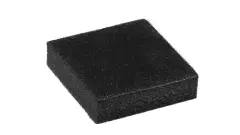
CROSS-LINKED POLYETHYLENE
- Characterized by a compact feel & resistance to water
- Has the ability to protect class “A” surfaces & is consequently used extensively in the packaging of medical products and equipment
Common Applications: Medical Packaging, Military Grade Tool Control, Orthopedics, Helmet Lining, Case Inserts, Electric Cables, Oil Applications, Alternative to PVC or Copper Tubing, & HVAC / Pipe Wrap

SILICONE
- Exceeds 204oC (400oF) Temperature Range
- Compression-Set Resistance
- Grades Range- Very Soft to Very Firm
- UL Rated Flame Resistance
- Outstanding Sealability
- Low Toxic Gas Emission When Exposed to Fire
- Ozone and Ultraviolet Resistance
- FDA Approved Materials
- Open & Closed Cell Options
Common Applications: Gaskets, Sheets, High Temperature Tubes, Firestops, & Surfactants
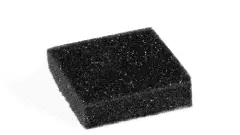
LOW PERMEABILITY FOAM
- Ability to be Laminated to Pressure Sensitive Adhesives
- Excellent Shape Retention
- Resistant to Wear and Abrasion
- Allows for Controlled Cushioning
- Breathable
Common Applications: Data-Processing Equipment, Dust & Vapor Seals, Air-Duct Damper Gaskets, Appliances, & Automotive
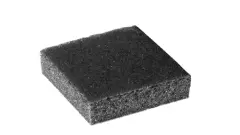
SPONGE RUBBER
- Closed-Cell
- Highly Flexible
- Adapts to almost all surface applications
- Used in Automotive, Appliance, Window & Door industries
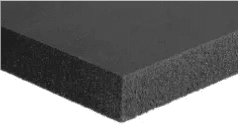
PORON® URETHANE FOAM
- Elasticity
- High Predictability
- Superior Recovery Characteristics
- Good Chemical Resistance
- Adapts to almost all surface applications
- Used in Automotive, Appliance, Window & Door industries
Common Applications: Enclosure Doors, Access Panels, Doors to Appliances, Wet Benches & Fume Hoods, Consumer Appliances, Automotive Interiors, Sealing, & Impact Resistance
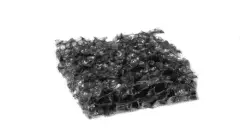
MICROCELLULAR POLYURETHANE ELASTOMER
- Low compression set
- High volume compressibility with minimal lateral expansion
- Excellent mechanical properties & durability
- Highly versatile – noise isolation at amplitude & high frequency with vibration isolation at large amplitude & low frequency
- Abrasion resistant
- Resistant to ozone, oils, greases and other aliphatic hydrocarbons
Common Applications: Office Furniture, Harbor Equipment, Crane Buffers, Construction, Mining & Building, Elevator Buffers, Sport & Leisure Equipment, Printing & Paper Transport, Packaging, Paper Cutting, Defense, Conveyor Belts, & Agriculture
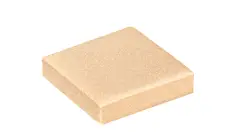
MEMORY FOAM (VISCO ELASTIC FOAM)
- Resiliency
- Cushioning
- Flexibility
- Shock absorption
- Sound absorption
- Mildew resistant
- Compressibility
Common Applications: Safety equipment, Mattresses, Pillows, Furniture, Audio equipment, Electronics, Industrial, Consumer, Sound Studios, & Seating



